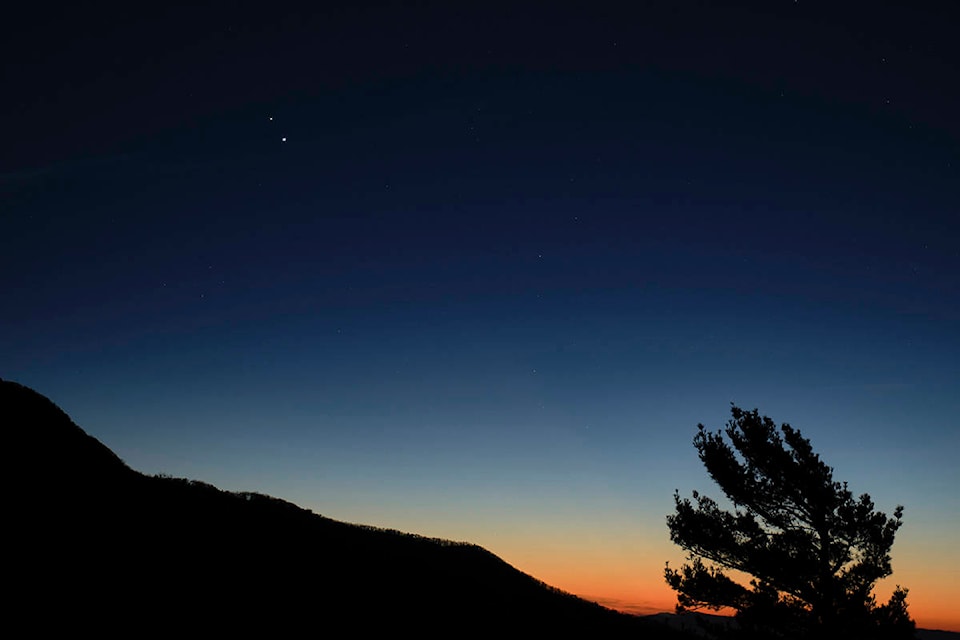By Charlie Carey
Culminating in crisp December skies, planets Jupiter and Saturn are coming together beginning Monday (Dec. 21) to form the rather rare Great Conjunction.
Happening roughly once every 20 years, the two biggest planets in the solar system will appear to pass each other. This year, however, is the closest they have come in about 400 years.
“From our vantage point, we’ll be able to see Jupiter on the inside lane, approaching Saturn all month and finally overtaking it on Dec. 21,” said Henry Throop, an astronomer in the Planetary Science Division at NASA headquarters in Washington, D.C.
Although appearing very close together from Earth, the two gas giants will still be hundreds of millions of miles away from each other.
Most visible just after sunset, it is purely coincidental that this astronomical sight also occurs on the winter solstice.
“Conjunctions like this could happen on any day of the year, depending on where the planets are in their orbits,” said Throop. “The date of the conjunction is determined by the positions of Jupiter, Saturn, and the Earth in their paths around the Sun, while the date of the solstice is determined by the tilt of Earth’s axis.”
For those wanting to see this planetary phenomenon for themselves, NASA recommends finding a viewing point with an unobstructed view of the sky, such as a field or park.
Luckily for those in urban settings, Jupiter and Saturn are generally bright enough to be seen from most cities – so long as the sky is free of clouds.
Skywatchers, you're in for a once-in-a-lifetime treat! Jupiter & Saturn are doing a planetary dance that will result in the Great Conjunction on Dec 21, just after sunset. Find out:
— NASA (@NASA) December 20, 2020
🤩 When and where to look up
📷 How to photograph the conjunction
Visit: https://t.co/SdQSLex2Ex pic.twitter.com/DkaB5XyO9B
Like us on Facebook and follow us on Twitter.
Want to support local journalism during the pandemic? Make a donation here.
